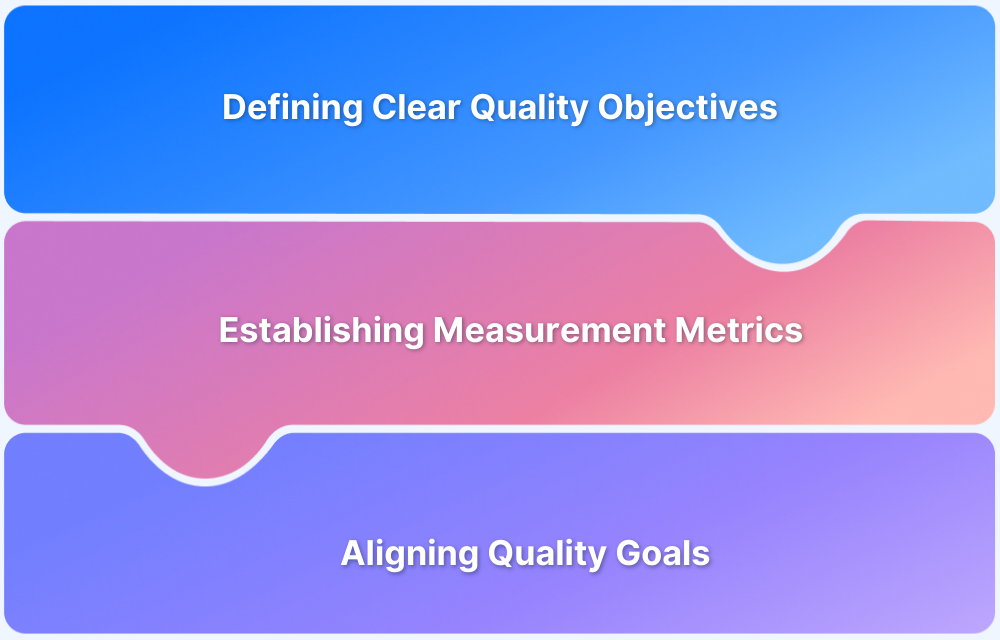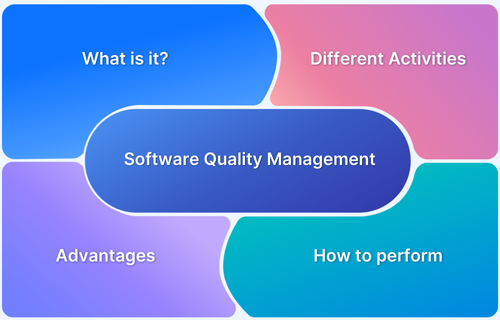Auditing in software engineering ensures software systems comply with standards, security protocols, and best practices. It involves reviewing code, processes, and infrastructure to identify risks and inefficiencies.
Overview
What is Auditing in Software Engineering?
Auditing in software engineering is the process of examining software processes, code, and security measures to verify compliance, detect vulnerabilities, and improve quality.
Purpose of Auditing
- Ensure regulatory and security compliance
- Identify and mitigate risks in software development
- Improve code quality and maintainability
- Enhance process efficiency and best practices adherence
When to Perform Auditing in Software Engineering?
- Before Deployment: To verify security, performance, and compliance before release
- After Major Updates: To ensure new features or fixes do not introduce vulnerabilities
- During Regulatory Changes: To confirm software adheres to updated industry standards
- Periodically (Scheduled Audits): To maintain security and code quality over time
- After Security Incidents: To analyze breaches and implement corrective actions
This article explains what software audit is, its benefits, metrics to look for, and how to perform auditing in software engineering.
What is a Software Audit?
A software audit is a thorough review of a software product to check its quality, progress, standards and regulations. It basically checks the health of a product and ensures that everything is going as planned. It can be done by an internal team or any external independent auditors.
If the audit is performed by an external auditor, it can add some financial strain to the company and disrupt development to accommodate such audits. It is recommended to perform regular internal audits on the software to ensure that proper regulations are followed and all licenses are up-to-date as it can also save the company from unnecessary legal issues.
Why Should You Perform a Software Audit?
Performing a software audit is essential for maintaining quality, security, and compliance. Here’s why it is necessary:
- Identify risks early: Detect security threats, coding flaws, and inefficiencies before they cause issues
- Ensure regulatory compliance: Avoid legal penalties by meeting industry standards and data protection laws
- Verify software integrity: Confirm that no unauthorized changes or vulnerabilities exist in the system
- Improve decision-making: Provide insights into software health for better planning and resource allocation
- Reduce technical debt: Address outdated code and dependencies before they lead to larger problems
- Enhance security posture: Regular audits help identify and fix potential security weaknesses
- Support business continuity: Ensure software remains reliable and resilient against disruptions
When to Perform Auditing in Software Engineering
Software auditing should be performed at critical stages of the development lifecycle to ensure compliance, security, and performance. Below are the key situations when auditing is necessary:
- Before Deployment: A pre-release audit ensures that the software meets security, performance, and compliance requirements before it goes live. This helps prevent security breaches, poor performance, or legal issues after deployment.
- After Major Updates or Feature Releases: Significant updates can introduce new vulnerabilities or unintended bugs. Auditing after each major release verifies that changes have not negatively impacted security, performance, or functionality.
- During Regulatory or Compliance Changes: When industry regulations or compliance requirements change, software audits are necessary to ensure adherence to new standards, such as GDPR, HIPAA, or ISO guidelines.
- Periodically as Part of Routine Maintenance: Regularly scheduled audits (e.g., quarterly or annually) help maintain security, performance, and code quality. This proactive approach helps detect issues early before they escalate into critical problems.
- After a Security Incident or Breach: An audit helps investigate the cause of a cyberattack or data breach, identify security gaps, and apply necessary fixes to prevent recurrence.
- During Mergers, Acquisitions, or Vendor Evaluations: When companies merge, acquire new software, or assess third-party solutions, audits help verify software integrity, security risks, and licensing compliance before integration.
Benefits of Audit in Software Testing
Conducting software testing audits ensures the testing process’s overall effectiveness, reliability, and security. Here are the key benefits:
- Improves test coverage: Audits help identify gaps in test cases, ensuring all critical functionalities, edge cases, and security aspects are thoroughly tested.
- Enhances defect detection: Reviewing testing strategies and execution improves defect detection rates, reducing the chances of undetected bugs in production.
- Ensures compliance with testing standards: Auditing verifies that testing processes align with industry standards (ISO, ISTQB, etc.), regulatory requirements, and internal best practices.
- Strengthens test documentation and reporting: A structured audit process leads to better test documentation, making it easier to track test execution, results, and defect trends.
- Increases test process efficiency: Audits identify inefficiencies in the testing lifecycle, helping teams refine strategies, optimize resource utilization, and eliminate redundant tasks.
- Reduces the risk of software failures: Identifying weaknesses in testing methodologies helps minimize post-release defects and reduces costly failures.
- Enhances automation strategy: Auditing automation scripts and frameworks ensure they are effective, maintainable, and aligned with business requirements, preventing automation inefficiencies.
- Supports continuous improvement: Regular audits drive ongoing improvements in test planning, execution, and defect management, leading to higher software quality over time.
Types of Audit in Software Testing
There are different types of audits based on what goals are needed to be achieved for the product
- Internal audit: These audits are done within the organization
- External audit: These are done by independent contractors or external agencies
- Compliance audit: This audit checks if the process is within the given standards. If the testing process has certain standards to adhere to, this audit ensures that it’s followed
- Process improvement: If there are any changes needed for the existing process, this audit helps in identifying them. This is done by evaluating the various steps in the process and identifying any problems, and eliminating them.
- Root cause analysis: This audit helps to find the root cause for a problem using different testing processes. It is done for specific problems that require some attention and needs to be resolved.
Metrics to watch during an Audit in Software Testing
There are various metrics that are monitored during an audit to ensure that the expected outcome is being achieved. Some of them are:
1. Project Metrics
Tracking project-level metrics helps determine the progress of the testing process and whether testing efforts meet deadlines and coverage goals.
- Percentage of test case execution: It analyses how many of the test cases are executed in the testing process
Percent of Test Case Execution =
(Number of Passed Tests + Number of Failed Tests + Number of Blocked Tests) / Number of Test Cases
Read More: Test Case Prioritization: A Detailed Guide
2. Product Metrics
Product metrics focus on defect analysis and quality measurement to help teams identify problem areas and improve software reliability.
- Critical defects: This helps in understanding the current quality of a product
Total Percentage of Critical Defects = (Critical Defects / Total Defects Reported) x 100
- Defect distribution across components: There may be some components in a product that may have significantly higher defects than others, and it is important to identify them. This metric helps in analyzing the problematic areas and focuses on these issues.
Defect Distribution Across Components = Total Number of Defects / Functional area(s)
- Defect priority distribution: This helps in gauging the effectiveness of the testing process. Based on the priority of the defects within a component, it helps to decide which component requires more attention over the others.
3. People Metrics
People metrics provide insights into tester performance and the effectiveness of defect reporting. They help manage and assess productivity and workload distribution.
- Issues per reporter: This keeps track of how many issues were reported by each reporter. It gives an idea of which defects the tester is working on, i.e., regression testing or identifying bugs
- Tests reported by each team member: This metric helps the management gauge each team member’s performance
What Can You Expect When Auditing in Software Engineering?
Auditing in software engineering follows a structured process, ensuring transparency, compliance, and overall software quality. It typically unfolds in three key stages: before, during, and after the audit.
Before the Audit: Preparing for the Process
Organizations must prepare for an audit by identifying key stakeholders, defining the scope, and ensuring all necessary documentation is ready. This involves
- Building a team of IT and legal and compliance professionals to manage the audit
- Reviewing software licenses, development practices, and security policies
- Setting up clear communication with auditors and stakeholders
- Outlining the scope, including software components, codebases, and security protocols
During the Audit: Data Collection and Analysis
The audit process involves gathering data, analyzing software components, and ensuring compliance with industry standards. Key activities include:
- Collaborating with auditors to provide necessary software documentation and system access
- Reviewing code quality, security vulnerabilities, and licensing agreements
- Assessing adherence to development best practices, testing methodologies, and regulatory standards
- Identifying areas requiring improvement based on the audit findings
After the Audit: Implementing Improvements
Once the audit is completed, findings are presented, and necessary improvements are identified. Organizations should:
- Review the audit report to address any compliance gaps or security vulnerabilities
- Implement corrective actions to enhance software quality and operational efficiency
- Develop a long-term strategy for continuous monitoring and compliance adherence
- Maintain records for future audits and refine processes to prevent recurring issues
How To Perform an Audit in Software Testing?
Here is a step-by-step guide to performing an audit in software testing.
- Define the scope and objectives: Clearly outline the purpose of the audit, whether it’s for compliance, process improvement, defect analysis, or security assessment. Identify the areas of testing to be reviewed, such as test cases, automation frameworks, defect management, and documentation.
- Gather and review testing documentation: Collect all relevant testing artifacts, including test plans, test cases, execution reports, defect logs, and automation scripts. Ensure these documents align with best practices and industry standards.
- Assess test coverage and effectiveness: Evaluate the percentage of test cases executed, defect detection rates, and test case prioritization. Identify gaps in coverage, such as untested functionalities, edge cases, and security vulnerabilities.
- Evaluate compliance with standards and best practices: Verify whether the testing processes adhere to industry standards (ISO, ISTQB, etc.) and regulatory requirements. Ensure proper defect tracking, documentation, and reporting structures are in place.
- Analyze defect trends and quality metrics: Examine defect distribution, critical defect percentages, and resolution times. Identify patterns that indicate recurring issues, inefficient test execution, or inadequate test coverage.
- Document findings and provide recommendations: Summarize the audit results in a detailed report, outlining key findings, compliance gaps, and suggested improvements. Present actionable insights to stakeholders for implementing necessary changes.
Conclusion
Audits improve the testing process and help organizations track progress, identify issues, and implement better solutions for long-term improvements. Regular audits also ensure software quality and efficiency, which makes them a crucial part of development.
BrowserStack makes auditing easier with logs that provide full visibility into key activities within your organization’s account. These logs help track changes, maintain compliance, and enhance security. Whether managing product access, reviewing account modifications, or overseeing organization settings, audit logs offer a detailed and reliable record of all actions.






